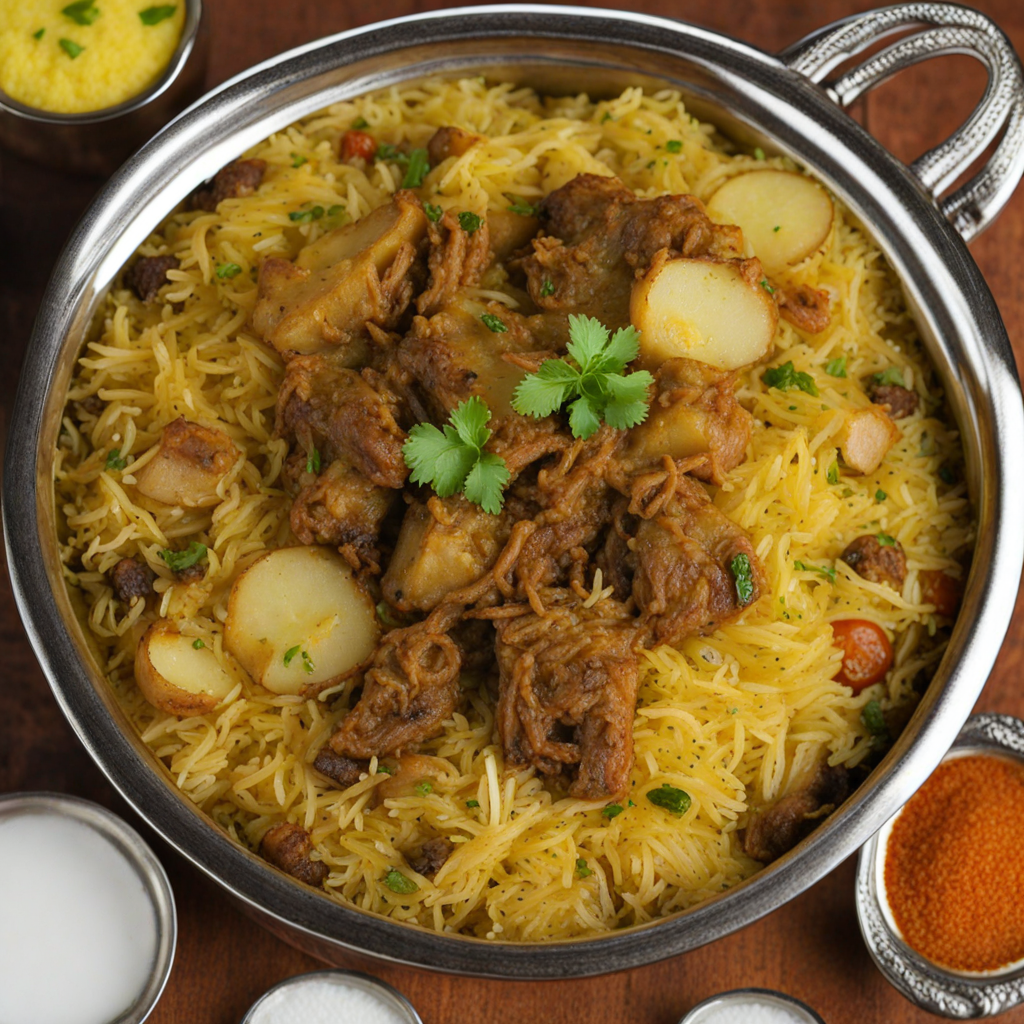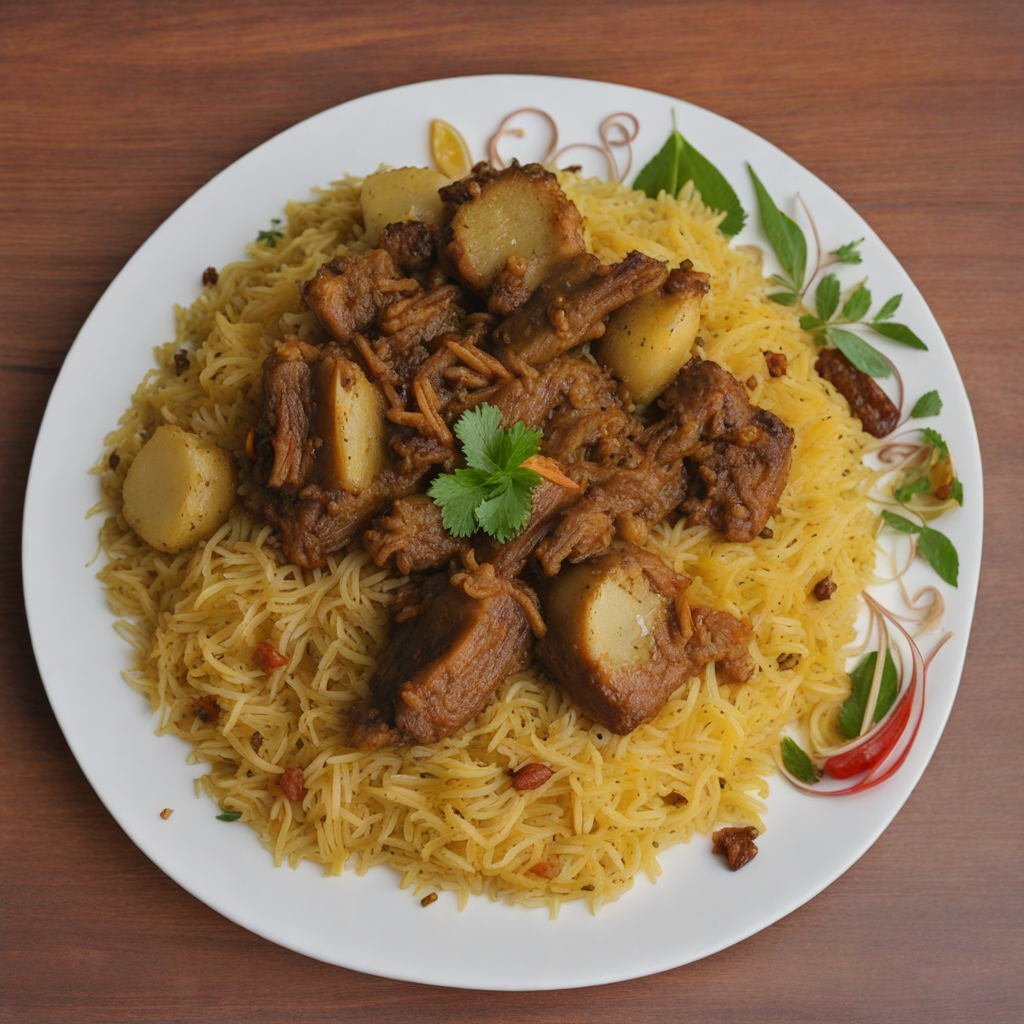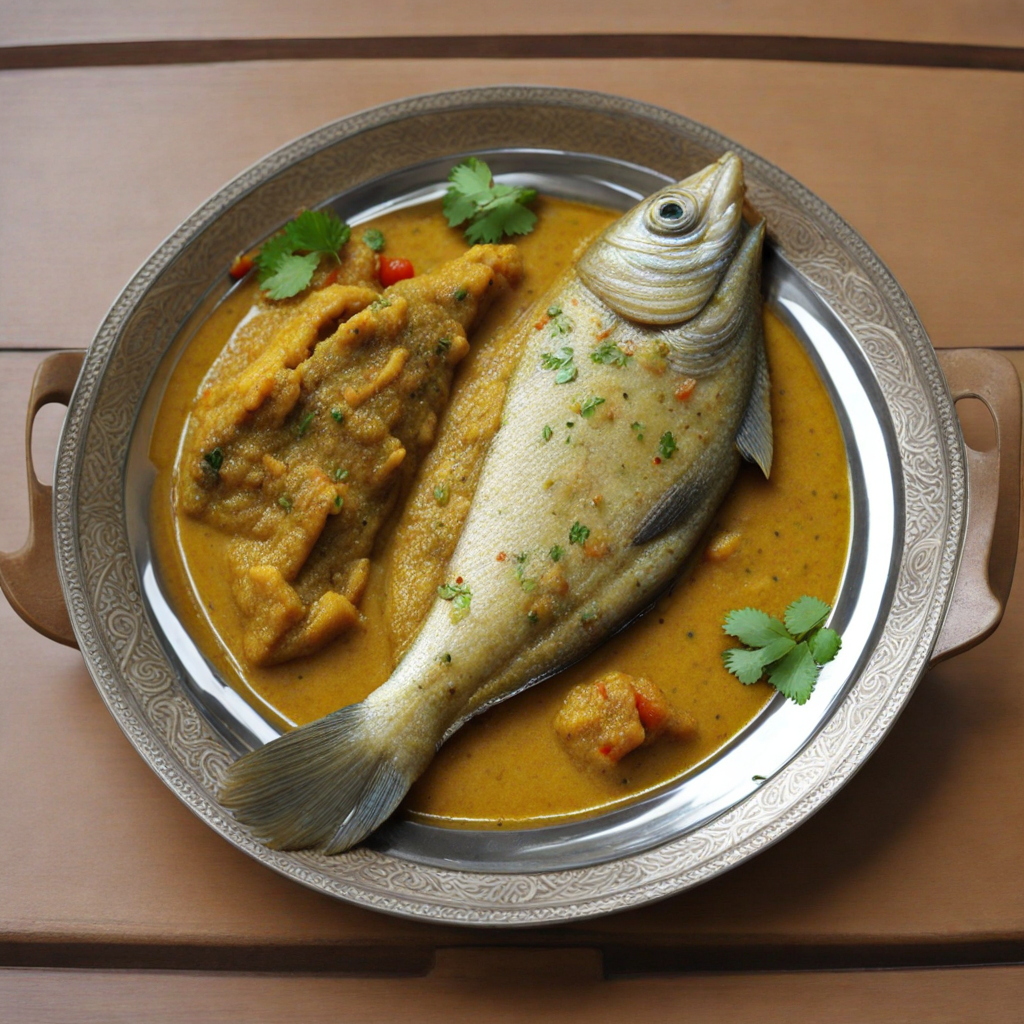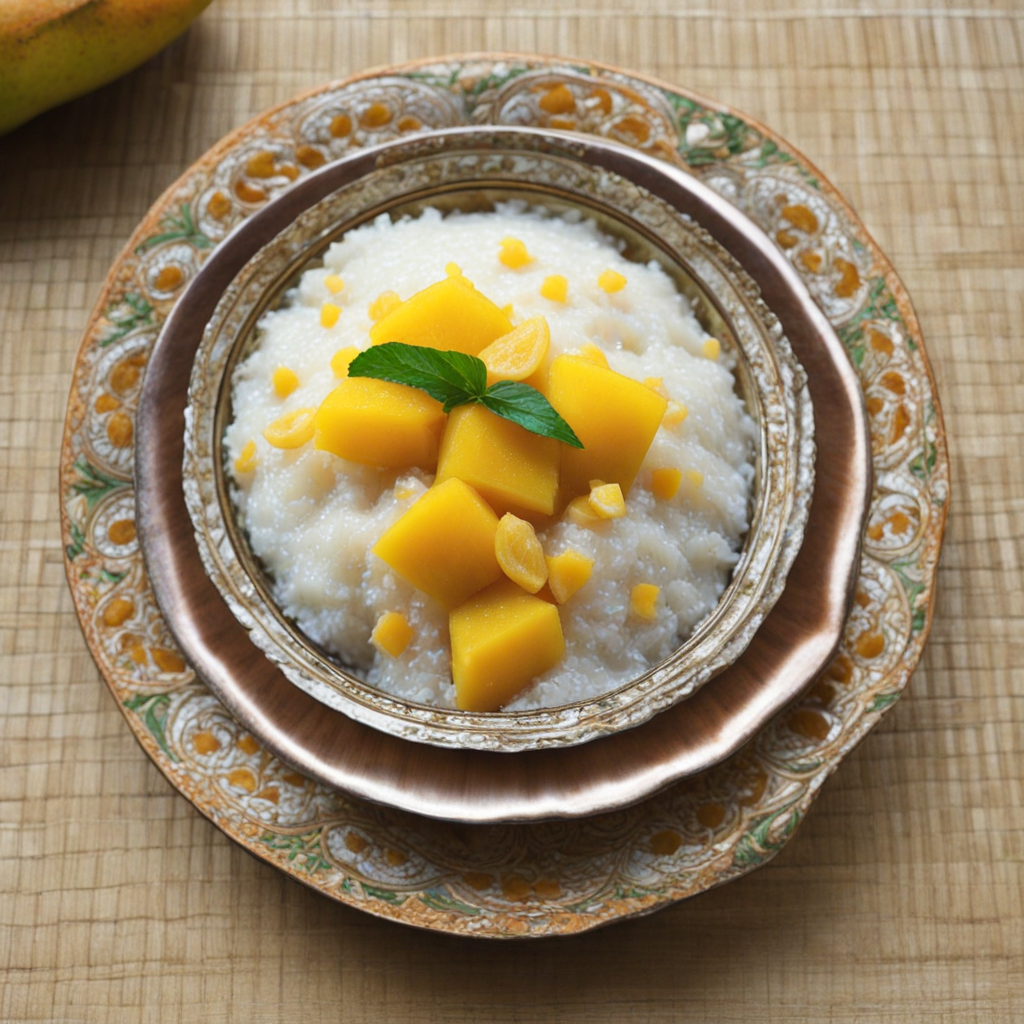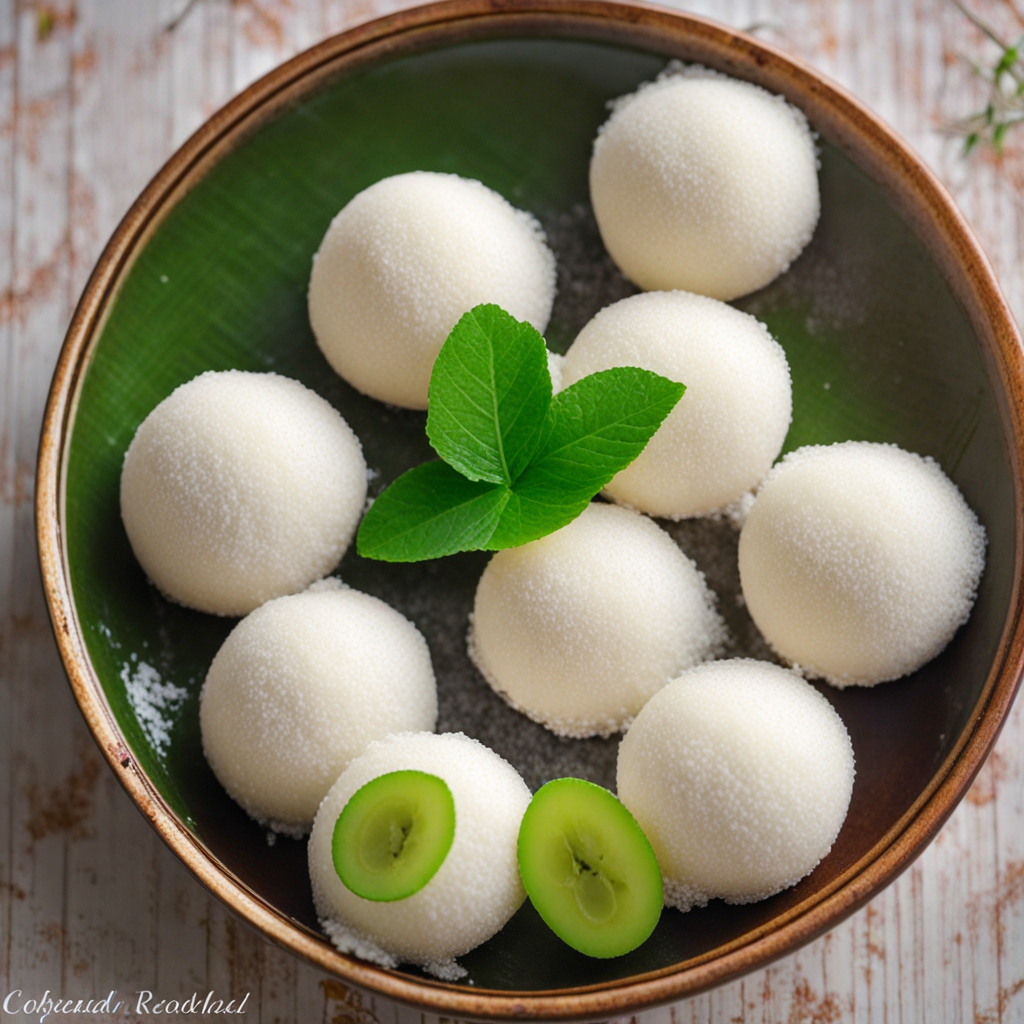Kachchi Biryani
Kachchi Biryani is a fragrant and flavorful dish that showcases the rich culinary heritage of Bangladesh. This traditional biryani is distinct in its preparation, utilizing raw marinated meat that is layered with partially cooked rice. The meat, often goat or chicken, is marinated in a blend of yogurt, spices, and sometimes saffron, infusing it with deep, aromatic flavors. As the biryani cooks, the raw meat releases its juices, mingling with the rice and creating a sumptuous flavor profile that is both tender and aromatic. One of the hallmarks of Kachchi Biryani is its unique cooking method, which involves layering the marinated meat and partially cooked rice in a sealed pot, allowing the dish to steam as it cooks. This technique, known as "dum," ensures that each grain of rice absorbs the essence of the spices and the natural flavors of the meat. The result is a colorful, fragrant dish with a beautiful array of spices, including cardamom, cloves, and cumin, creating a symphony of flavors that is both comforting and inviting. Served with a side of tangy yogurt or a fresh salad, Kachchi Biryani is not just a meal; it is an experience that embodies the essence of Bangladeshi cuisine. Each bite reveals layers of flavor, from the tender, spiced meat to the fluffy rice, making it a favorite for special occasions and gatherings. The dish's rich history and the craftsmanship involved in its preparation make Kachchi Biryani a must-try for anyone looking to explore the vibrant and diverse flavors of Bangladesh.
How It Became This Dish
The Engaging History of Kachchi Biryani: A Culinary Gem of Bangladesh #### Origins: A Culinary Confluence Kachchi Biryani, a fragrant and rich rice dish that has become synonymous with celebrations in Bangladesh, boasts a history as layered and complex as its own preparation. The origins of biryani can be traced back to the ancient Persian Empire, where a rice and meat dish was created for royalty. The term "biryani" itself is derived from the Persian word "birinj," meaning rice. As the dish made its way to the Indian subcontinent through the Mughals in the 16th century, it underwent regional adaptations and became a significant part of South Asian cuisine. In Bangladesh, Kachchi Biryani has its roots in the city of Dhaka, the capital, where culinary traditions were influenced by Mughal emperors and various local ingredients. The word "kachchi" refers to the use of raw marinated meat layered with partially cooked rice, which is then slow-cooked together, allowing the flavors to meld beautifully. This distinctive method sets Kachchi Biryani apart from other biryanis, where meat is often pre-cooked. #### Cultural Significance: A Symbol of Festivity Kachchi Biryani is more than just a meal; it is a cultural icon in Bangladesh. It is a dish that symbolizes hospitality, celebration, and community. Traditionally served during weddings, festivals, and family gatherings, Kachchi Biryani represents the essence of togetherness. The preparation and sharing of this dish often bring families and friends together, fostering bonds and creating lasting memories. The dish is also a testament to the culinary prowess of Bangladeshi cooks, who take pride in crafting the perfect Kachchi Biryani. The preparation involves a meticulous process of marinating the meat, usually mutton or goat, in yogurt and a blend of spices such as cardamom, cloves, and saffron. The rice, often a premium quality basmati, is then layered with the marinated meat, creating a visually stunning and aromatic dish that tantalizes the senses. Kachchi Biryani is not just confined to Dhaka; it has transcended geographical boundaries and is now cherished across Bangladesh and among the Bangladeshi diaspora worldwide. Each region adds its unique twist—whether it’s the use of local spices, different types of meat, or variations in cooking techniques—creating a rich tapestry of flavors and stories associated with this beloved dish. #### Development Over Time: A Culinary Evolution As time progressed, Kachchi Biryani adapted to the evolving tastes and preferences of the Bangladeshi populace. The dish witnessed a significant transformation during the British colonial era, which introduced new cooking techniques and ingredients to the subcontinent. Local cooks began experimenting with the biryani, infusing it with elements of British culinary practices while still retaining its traditional roots. In the late 19th and early 20th centuries, Kachchi Biryani became increasingly popular among the urban elite of Dhaka. The advent of restaurants specializing in biryani, such as the legendary "Biryani House" and "Haji Biryani," contributed to its fame. These establishments became social hubs where people gathered to savor the dish, further embedding it within the cultural fabric of the city. The post-independence era of Bangladesh saw a revival and reinvention of Kachchi Biryani. With a renewed sense of national identity, chefs and home cooks began to embrace and celebrate their culinary heritage. The dish became a symbol of pride for many Bangladeshis, representing their rich history and cultural diversity. Festivals like Eid al-Adha and Pohela Boishakh (Bengali New Year) often feature Kachchi Biryani, reinforcing its status as a celebratory dish. #### Modern-Day Kachchi Biryani: A Global Sensation Today, Kachchi Biryani continues to evolve, reflecting contemporary trends while remaining rooted in tradition. The dish has gained international recognition, becoming a staple in Bangladeshi restaurants worldwide. The diaspora has played a crucial role in popularizing Kachchi Biryani, introducing it to new audiences while preserving its authenticity. Modern variations of Kachchi Biryani have emerged, catering to diverse tastes and dietary preferences. Some cooks experiment with vegetarian versions, using local vegetables and plant-based proteins, while others introduce fusion elements, combining traditional flavors with global influences. Despite these adaptations, the essence of Kachchi Biryani remains unchanged—its ability to bring people together and create a sense of belonging. In the age of social media, Kachchi Biryani has found a new platform for visibility. Food bloggers, chefs, and enthusiasts share their experiences and recipes online, sparking a renewed interest in this iconic dish. Cooking classes and workshops dedicated to Kachchi Biryani have become popular, allowing enthusiasts to learn the art of preparation and understand the cultural significance behind it. #### Conclusion: A Timeless Culinary Heritage Kachchi Biryani is much more than a dish; it is a rich tapestry woven from history, culture, and community. Its journey from royal courts to the homes of everyday Bangladeshi families illustrates the power of food to connect people across generations. As Kachchi Biryani continues to evolve, it remains a beloved culinary heritage that embodies the spirit of Bangladesh—resilient, diverse, and full of flavor. In a world increasingly defined by globalization, Kachchi Biryani stands as a reminder of the importance of preserving culinary traditions. It invites us to savor not just the flavors on our plates, but also the stories, memories, and identities that they represent. As we indulge in a plate of Kachchi Biryani, we partake in a celebration of heritage, a connection to our past, and a promise for the future of culinary exploration.
You may like
Discover local flavors from Bangladesh


